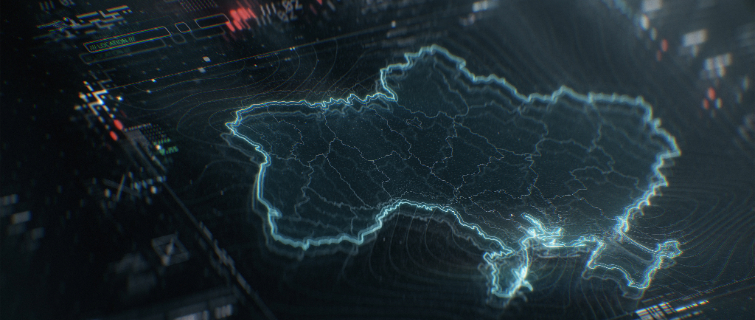
The 2022–24 war in Ukraine has offered profound insights into modern warfare from an intelligence standpoint. For professionals in applied intelligence, including those enrolled in the Master’s in Applied Intelligence program at Georgetown, it is essential to examine both the strategic miscalculations and the tactical opportunities that emerged during this conflict.
This article highlights four critical intelligence miscalculations that impacted the trajectory of the war and explores operational intelligence opportunities that provided new pathways for intelligence success in modern warfare.
Strategic Miscalculations
The Russian military’s expectation of a swift victory in Kyiv was severely undermined by several miscalculations. Russian planners overestimated their own military capabilities, assuming they could rapidly seize the capital with minimal resistance. However, logistical failures, disorganized battlefield operations, and unexpectedly strong Ukrainian resistance stalled their advance. Interestingly, the Western intelligence community also predicted that Russia would achieve a decisive victory, forecasting the fall of Kyiv within 48 to 72 hours. This misjudgment was based on Russia’s apparent military superiority, but like Russia, the West underestimated Ukraine’s resolve. Ukrainian forces effectively employed asymmetric tactics and urban warfare to delay Russian progress, leveraging high morale and coordinated defensive strategies. These efforts prolonged the conflict, turning it into a more complex and drawn-out engagement. The flawed belief in a quick victory, shared by both Russian and Western analysts, led to overconfidence, which ultimately prolonged the war and strained Russia’s military resources.
Another major miscalculation by Russia was its underestimation of Ukraine’s ability to resist with the backing of Western support. The U.S., NATO, and the European Union provided Ukraine with advanced military aid, including high-precision HIMARS systems and anti-tank missiles, which significantly bolstered Ukraine’s defensive capabilities. In addition to military aid, Western nations offered extensive economic and diplomatic support, ensuring that Ukraine could sustain itself amidst the ongoing conflict. Economic aid flowed alongside consistent diplomatic pressure, weakening Russia’s strategic position. However, cracks began to emerge within the Western alliance, particularly with Hungary’s vocal support of Russia and Germany’s initial reluctance to provide extensive military assistance to Ukraine. Despite these early hesitations, the broader political unity of NATO and the EU eventually prevailed, reinforcing their commitment to Ukraine. This combined military, economic, and political assistance was critical in prolonging Ukraine’s resistance and altering the course of the war.
One of the major miscalculations made by the West during the Ukraine conflict was underestimating Russia’s resilience under economic sanctions. Despite the imposition of severe sanctions, Russia managed to maintain energy exports to non-Western nations like China and India, which generated critical revenue and mitigated the economic damage. Additionally, Russia displayed economic adaptability by implementing measures such as currency controls and shifting trade toward non-Western markets, thereby stabilizing its economy in the face of Western pressure. These adaptations exposed the limitations of economic sanctions as a tool against authoritarian regimes. Western intelligence underestimated the ability of such regimes to withstand economic isolation, highlighting the need for a reassessment of the efficacy of sanctions in achieving strategic goals.
The war in Ukraine exposed significant miscalculations in the West’s ability to support Ukraine, particularly regarding military supply chains. A backlog in weapons production emerged as Western nations struggled to meet Ukraine’s demand for arms due to delays in defense manufacturing. These delays highlighted vulnerabilities within military supply chains, as nations had not maintained sufficient production capacity for large-scale conflicts. Furthermore, global supply chain disruptions—exacerbated by the COVID-19 pandemic—slowed arms production and delivery, limiting Ukraine’s access to crucial military resources. This situation underscored a broader issue: the underinvestment in defense readiness by Western nations. Years of peacetime complacency left military industrial capacity ill-prepared for the demands of sustained warfare, highlighting the need for greater investment in defense production to avoid similar supply chain issues in future conflicts.
Tactical and Operational Intelligence Opportunities
The war in Ukraine has underscored several tactical and operational intelligence opportunities that have significantly influenced the conflict. One key factor is the use of Open-Source Intelligence (OSINT), which has provided real-time insights into troop movements and battlefield conditions through publicly available sources such as satellite imagery and social media. This has allowed both sides to make rapid and informed decisions. Cyber and electronic warfare have also played a critical role, with both Russia and Ukraine deploying cyberattacks to disrupt communications and critical infrastructure. Drones and unmanned systems have been invaluable in real-time surveillance, reconnaissance, and precision strikes, offering both strategic and tactical advantages on the battlefield. Additionally, real-time intelligence sharing, especially from Western allies like NATO, has given Ukraine a significant edge, allowing for quicker responses and better coordination. Disinformation and psychological warfare, particularly Ukraine’s use of social media to counter Russian narratives and boost international support, have also emerged as crucial tools in shaping perceptions and morale, illustrating the evolving nature of modern warfare. These intelligence opportunities have transformed the tactical landscape and underscored the importance of integrating advanced technologies and real-time data into military operations.

